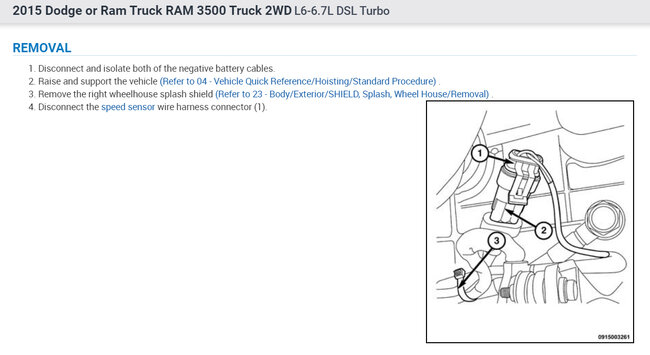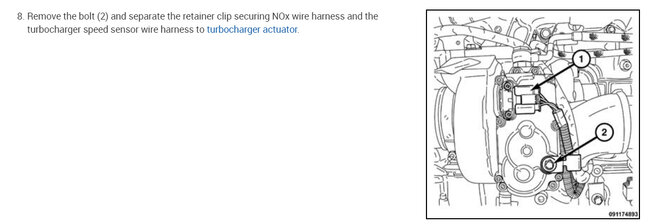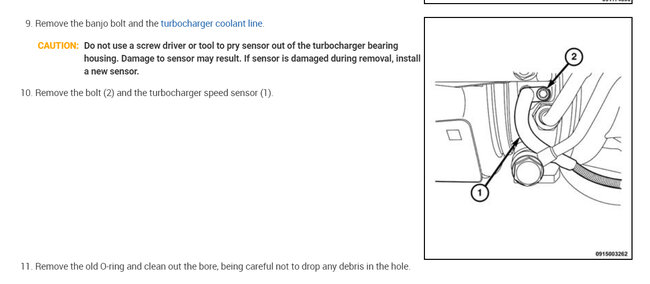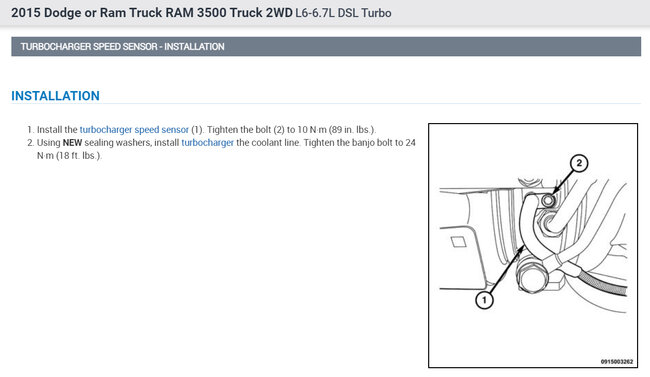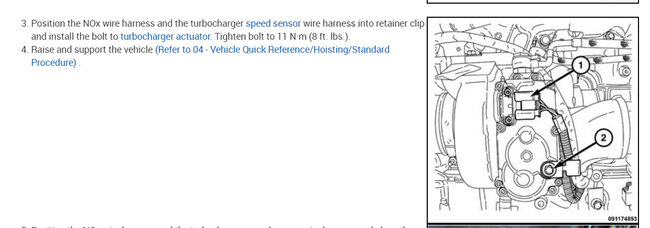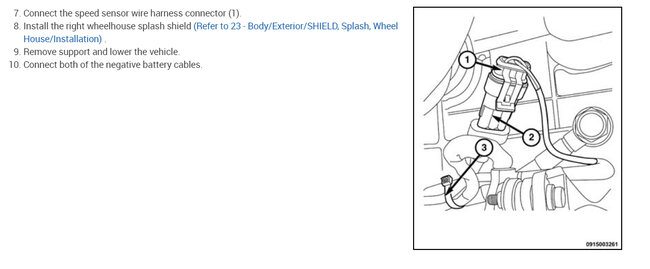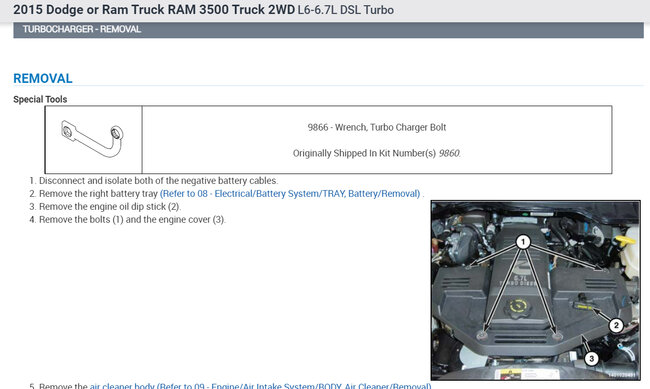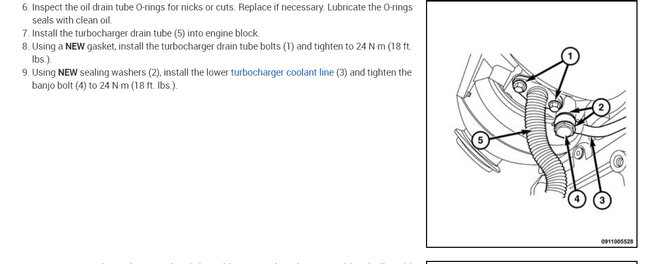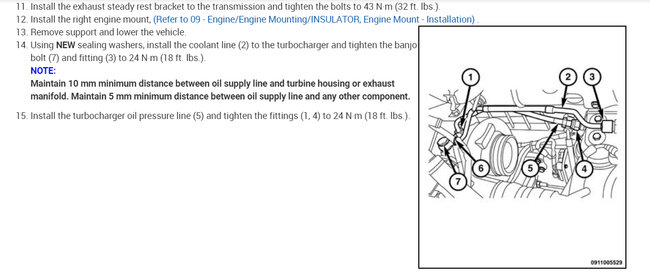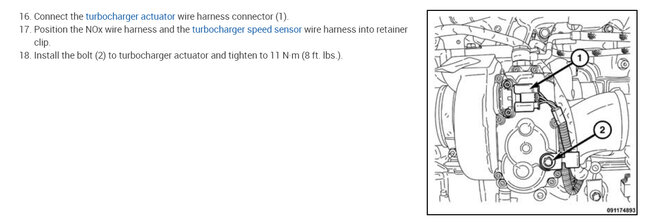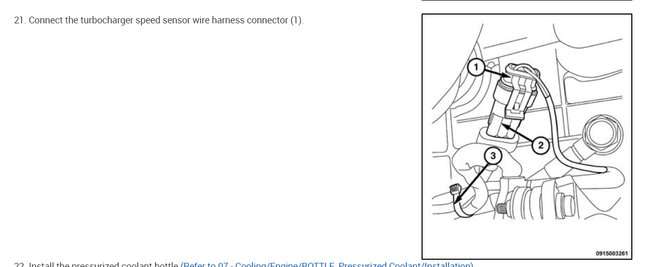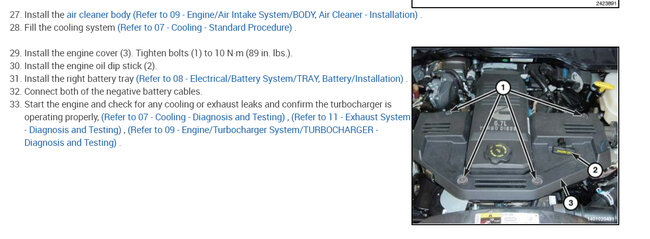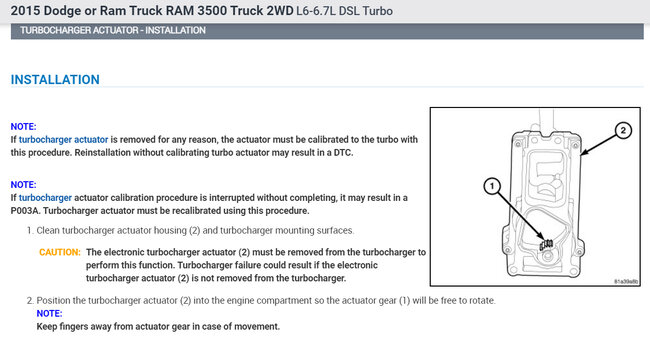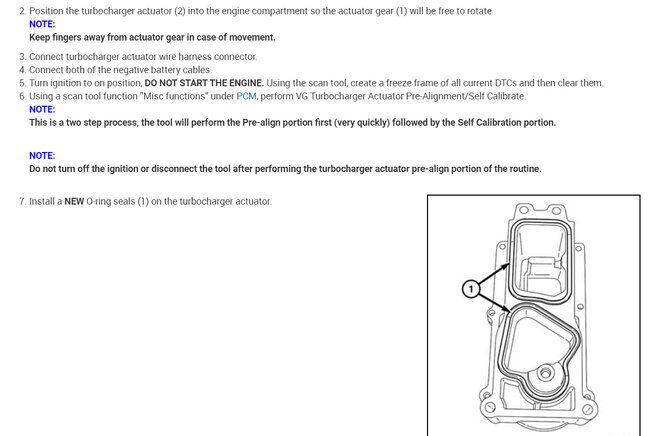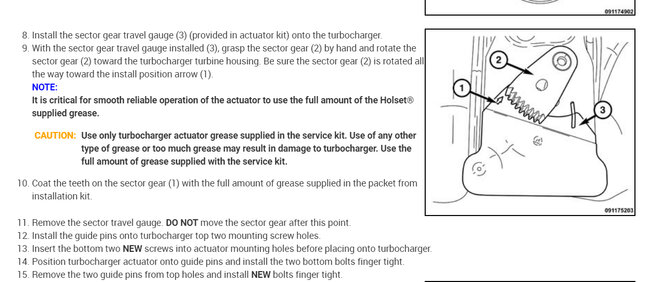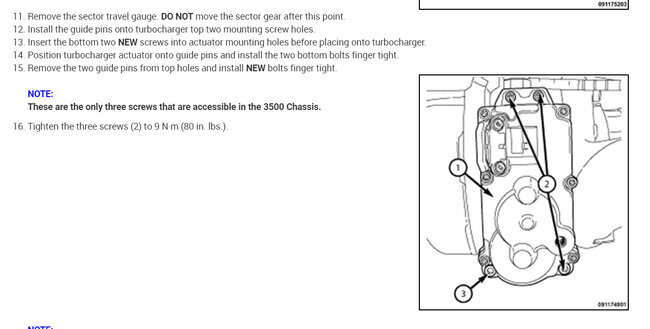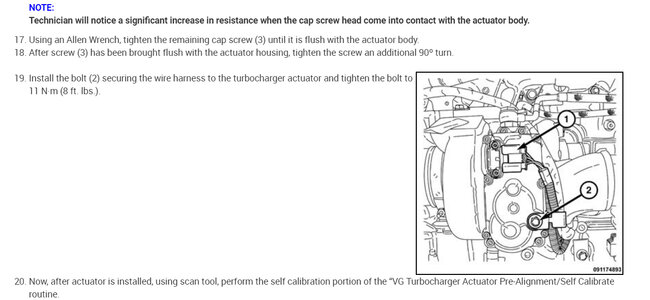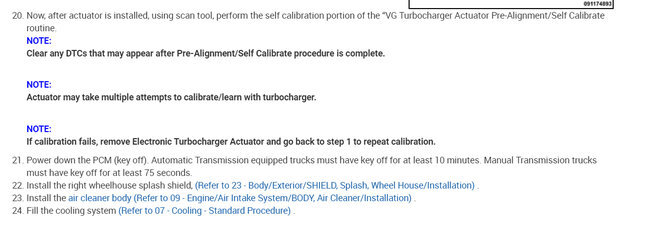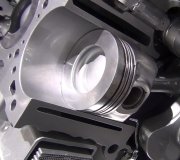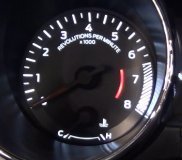Could you have a defective part? I found information on the turbo speed sensor and turbo replacement. Check the images below as well. You might want to try to leave the battery disconnected overnight, this should reset the system from the boot log inside the PCM. There is a specific procedure for replacing the turbo actuator which must be done correctly, or the turbo will not self-learn, I have included those instructions in the images below as well.
Electronically Controlled Actuator
Note:
If turbocharger actuator is removed for any reason, the actuator must be calibrated to the turbo with turbocharger actuator installation procedure. Reinstallation without calibrating turbo actuator may result in a DTC.
Note:
If turbocharger actuator calibration procedure is interrupted without completing, it may result in a P003A. Turbo actuator must be recalibrated using the turbo actuator installation procedure.
The Electronically Controlled Actuator is mounted to the turbocharger bearing housing. The actuator consists of an integrated controller and a gear train that controls the position of the sliding nozzle ring. The actuator uses a signal from the Powertrain Control Module (PCM) to control the relationship between the sliding nozzle ring and turbine blades.
Moving the nozzle ring rearward or forward redirects the exhaust flow so that the turbine wheel spins faster or slower as needed
If the sliding nozzle is moved rearward, the turbocharger builds more pressure (turbine wheel moves faster)
If the sliding nozzle is moved forward, the turbocharger builds less pressure (turbine wheel moves slower)
Exhaust Brake
The Variable Geometry Turbocharger (VGT) Exhaust Brake works in conjunction with the engine and transmission to provide an integrated braking system to help slow the vehicle. This is commonly referred to as exhaust braking. Braking power is achieved by modulating the sliding nozzle ring to restrict the flow of exhaust gases from the engine, this will create high back pressure on the engine. The high back pressure creates a high level of resistance to the motion of the pistons within the engine and this resistance is used to reduce engine speed and thus vehicle speed.
The exhaust brake feature will only function when the Exhaust Brake Switch to the ON position. With the switch in the ON Position and the vehicle moving faster than 5 MPH; the exhaust brake will automatically operate when pressure is removed from the accelerator pedal allowing the Powertrain Control Module (PCM) to see 0% throttle and 0% fuel delivery.
Here are the instructions on how to replace the turbo and the electronic turbo actuator. Check out the images (below). Please let us know what you find. We are interested to see what it is.
Images (Click to make bigger)
Friday, November 18th, 2022 AT 12:18 PM
